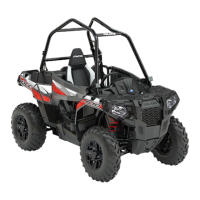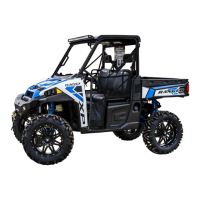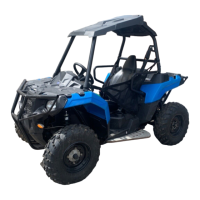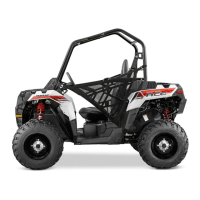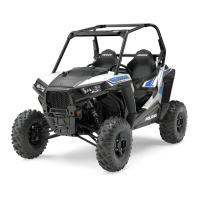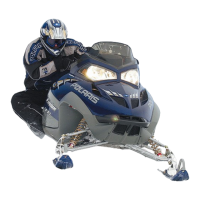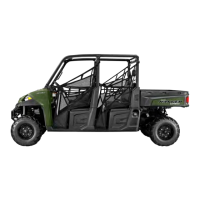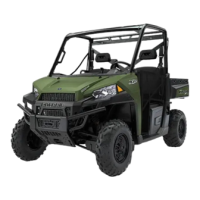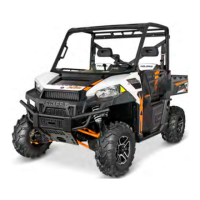3
9929422 R02 - 2017-2019 ACE 900 Service Manual
© Copyright Polaris Industries Inc.
3.19
COOLING SYSTEM SPECIFICATIONS
Recommended Coolant
Polaris Extended Life Antifreeze:
2880514 – Quart
2880513 – Gallon
Use only high quality antifreeze/coolant mixed with
distilled water in a 50/50 ratio, depending on freeze
protection required in your area.
CAUTION
Using tap water in the cooling system will lead to a
buildup of deposits which may restrict coolant flow and
reduce heat dissipation, resulting in possible engine
damage. Polaris Extended Life 50/50 Antifreeze/
Coolant is recommended for use in all cooling systems.
COOLING SYSTEM CAPACITY
ITEM
SPECIFICATION
Cooling System Capacity 3.0 Qts (2.8 L)
Pressure Cap Relief
13 PSI
TEMPERATURE SPECIFICATIONS
CONDITION COOLANT TEMP
Thermostat Starts to
Open
180° F (82° C)
Fan Shuts Off 194° F (90° C)
Fan Turns On 205° F (96° C)
Thermostat Fully Open 203° F (95° C)
Engine Temperature
Overheat Indicator
232° F (111° C)
Engine Protection Level 1
– Power Limit
232° F (111° C)
Engine Protection –
Ignition Misfire
237° F (114° C)
Engine Protection Level 2
– Power Limit
244° F (118° C)
Engine Shutdown
Protection
252° F (122° C)
COOLING SYSTEM PRESSURE TEST
1. Open rack and remove the access panel.
2. Remove pressure cap and pressure test the cooling
system using a commercially available pressure
tester.
WARNING
Never remove pressure cap when engine is warm or
hot. The cooling system is under pressure and serious
burns may result. Allow the engine to cool before
servicing.
3. The system must maintain 10 psi for five minutes or
longer. If pressure loss is evident within five minutes,
check the filler neck, radiator, hoses, clamps and
water pump weep hole for leakage.
PRESSURE CAP TEST
1. Open the front rack and remove the access panel.
2. Remove the pressure cap (see “WARNING” under
“Cooling System Pressure Test”) and test using a cap
pressure tester (commercially available).
WARNING
Never remove pressure cap when engine is warm or
hot. The cooling system is under pressure and serious
burns may result. Allow the engine to cool before
servicing.
3. The pressure cap relief pressure is 13 psi. Replace
the cap if it does not meet this specification.
RADIATOR INSPECTION
1. Check radiator air passages for restrictions or
damage.
2. Carefully straighten any bent radiator fins.
3. Remove any obstructions with compressed air or low
pressure water.
CAUTION
Washing the vehicle with a high-pressure washer could
damage the radiator fins and impair the radiators
effectiveness. Use of a high-pressure washer is not
recommended.
ENGINE / COOLING SYSTEM
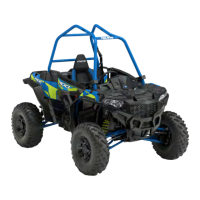
